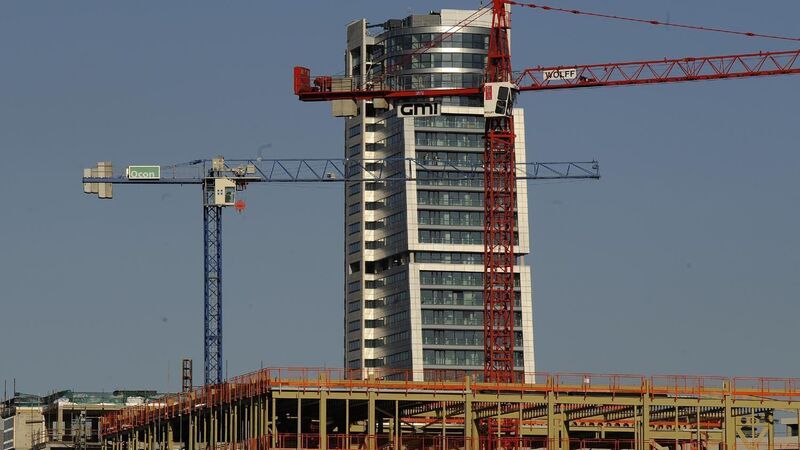Ireland in a ‘race to the bottom’ on apartment standards, warns UCD housing expert

In Tuesday’s budget, one of the marquee announcements was a cut in the Vat rate on the sale of completed apartments from 13.5% to 9%.
Ireland has “entered a race to the bottom” when it comes to measures aimed at boosting the supply of apartments, and it risks creating communities “people don’t want to live in”, a top academic has said.
Orla Hegarty, an architect and assistant professor at the School of Architecture, Planning, and Environmental Policy in University College Dublin, was reacting to recent measures outlined by the Department of Housing along with the costly Vat rate reduction for apartments that was announced in this week’s budget.
“The way things are heading, chasing smaller and smaller apartments, we could waste a lot of resources building them and find out they’re not suitable or what people need,” she said.
In Tuesday’s budget, one of the marquee announcements was a cut in the Vat rate on the sale of completed apartments from 13.5% to 9%. The cost of this measure is estimated in the hundreds of millions a year, and it will last until the end of 2030.
The Government said this was to address the “viability gap” in apartment construction and activate unstarted planning permissions.
The minister for housing James Browne said that targeted tax measures in the budget are an “important step toward unlocking Ireland’s apartment pipeline”.
“They are designed to tackle the financial barriers that have been a challenge to apartment construction in recent years,” he said.
It received broad welcome in some quarters, such as from the Society of Chartered Surveyors in Ireland and Savills Ireland.
Annette Hughes, the director of economic advisory services at EY Ireland, said some 14,000 apartments with planning permission in Dublin have not commenced due to viability issues.
“The reduction in Vat to 9% for the construction of new apartments will further help to bridge the viability gap for apartment construction in our cities and on brownfield sites.”
However, the move was roundly criticised by opposition parties. Labour’s housing spokesperson Conor Sheehan said it was a “Galway tent budget” for developers ahead of the public, while his Social Democrats counterpart Rory Hearne said “profits are bound to be pocketed” by developers and funds through the scheme.
“[This] Budget is a clear return to the bad old days and has all the hallmarks of something cobbled together while attention was elsewhere,” Mr Sheehan said.
On Friday, trade union Unite also hit out at the measures as a “bonanza” for developers.
“Rather than ploughing over €500m into tax breaks for developers, the money should have been used together with some of the windfall Apple tax money to develop a public construction company mandated to build truly affordable homes on public land,” regional officer James McCabe said.
Supports for developers to make apartments more viable had been long flagged by the Government ahead of the budget.
During the summer, Mr Browne brought proposals to Government to reduce the minimum size of apartments as well as removing the requirements around the mix of apartments in private developments.
He claimed this could result in up to a reduction of €100,000 per unit in the cost of building apartments.
The Construction Industry Federation (CIF) welcomed the recent changes, including the Budget Vat cut, and said it “sends a strong signal to international investors in apartment construction that Ireland is a place to invest with a stable regulatory environment”.
“We would be hopeful that all these changes will see a return of institutional and international investors,” CIF chief executive Andrew Brownlee said.
“The Department of Finance estimates that to achieve 50,000 housing units per annum, our annualised investment in housing would need to reach €22bn per annum. The only way to achieve this level of investment is attracting back international capital to the Irish residential market.”
However, Ms Hegarty previously wrote in the that the new standards could create developments akin to drab Soviet-style blocks and that they “resurrect the old Khrushchyovkas as the urban housing ambition for 21st century Ireland”.
“Housing is being looked at through the prism of property investment. Housing that works needs to be considered as a whole residential community. The form, design, functioning of that community has to be considered in relation to the people who live there and their needs.
“When things are looked at simply through square metres, there’s a risk of bad investments. There are examples here and internationally of bad housing that was eventually demolished as it didn’t meet the human needs of people. People didn’t want to live there, and it couldn’t be managed or maintained at a reasonable cost.”
Ms Hegarty said there was a risk of such a situation arising again given the loosening of apartment standards signalled by Government.
Both she and Unite have criticised the continued narrative around “viability” on apartments, with the latter remarking it is a euphemism for “super-profitability” in the sector.
The UCD academic said there is a real risk of a reduction in the quality of housing as efforts continue to pull whichever levels can be to boost supply.
“There’s a very naive assumption that supply will solve every problem,” Ms Hegarty added.
“People need affordable housing at scale in communities they want to live in, and that’s not what’s happening at the moment.”













